At the risk of my blog becoming too much like a travel diary, I want to post about my trip to Zürich last month. I visited Zürich briefly to see Grossmünster and Sigmar Polke‘s stained glass. (Grossmünster means ‘large cathedral’.) It’s forbidden to take photography inside of the building, so I had thought it would be somewhat redundant to write up about the visit without pictures of my own.
Good thing there are a few images on the internet from the years when the works were promoted by cultural and tourism websites!
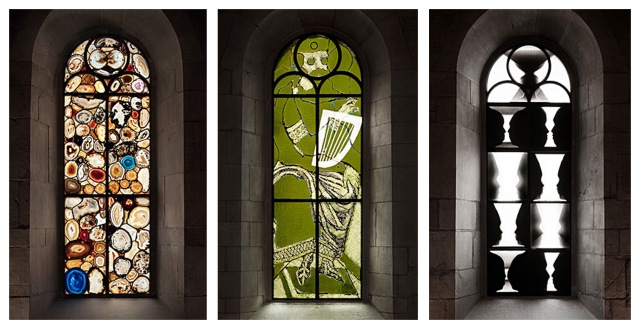
Pictures taken from Swissinfo.ch
Firstly, getting to Zürich from Steckborn was a breeze with the BBS trains and buss phone app. It took a buss and three trains, but I got there. I was determined to get there!
There is a large bronze water fountain and statue of Alfred Escher outside of the Zürich HB train station (the largest train station in Switzerland). You can’t miss the monument exiting the station if you’re headed for the Romanesque ex-cathedral .
Zürich has its own Kunsthaus (art house) a National Museum, and even vintage a Toy Museum, so really, there’s so much about the city that I didn’t get to see in the single morning I was able to spend there. Definitely, it’s a place to head to again in the future. Or if you happen to visit Switzerland, know that Zürich has a lot to offer in art and design.
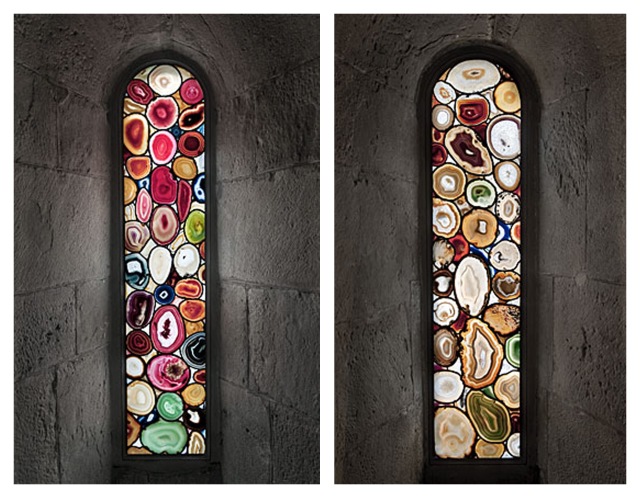
So… who is the artist behind the stained glass…? Born 1941 in Oels, Poland, Sigmar Polke and his family were expelled to communist East Germany after the war. The consumer culture he grew up immersed in had a lasting impact on his work, his earliest successful works depicting consumer goods. In his works, Polke made use of very unconventional mediums, such as meteorite dust or detergent.
Polke trained as a glass painter in Düsseldorf and studied for six years at Düsseldorf Academy of the Arts. He’s had his work exhibited in Zürich’s Kunsthaus. The stained glass on show in Grossmünster display Polke’s interest in alchemy, transformation, and religion.
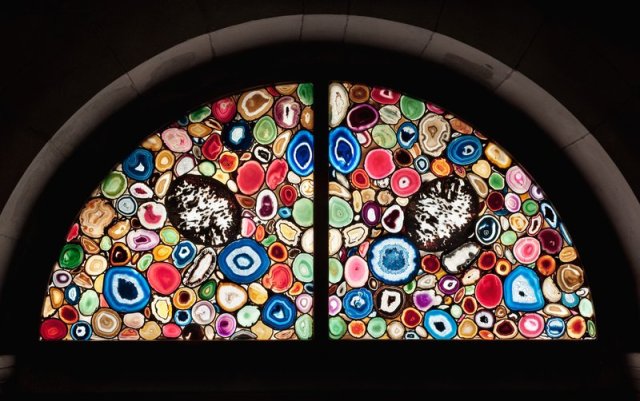
Photo from grossmuenster.ch
It was between 2006 and 2009 that Polke completed his stained glass windows in which Grossmünster commissioned. I had just visited some other places of worship in Germany prior to seeing Grossmünster’s very unconventional windows, which set it apart from much more conservative churches.
The agate windows are particularly spectacular for their colour arrangement. Acording to the English-language booklet I bought from the visit, agate stone slices have been used in window-making since the Middle Ages. Modern technology allows us to thinly cut the rocks and we can see the coagulation of the time and energy within the stones.
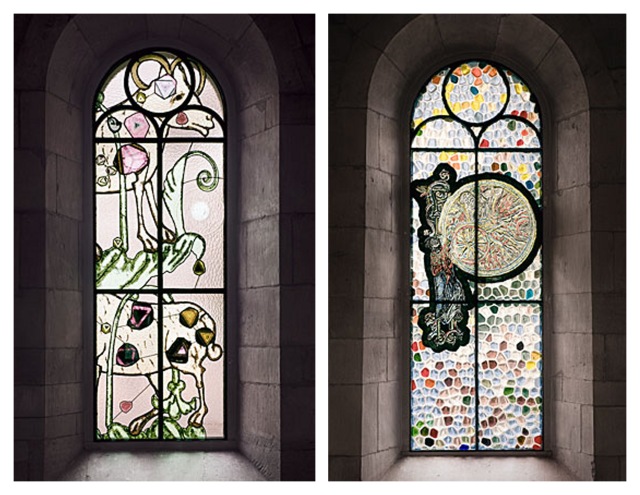
Each of Polke’s windows carry some religious significance. The Scapegoat… burdened by people’s guilt. Its embedded wounds are represented by the precious stone tourmaline.
The Prophet Elijah depicts a medallion with Elijah’s ascension; Elijah rides a fiery chariot into the world beyond, and discards his coat, and disciple Elisha picks it up. The coin-like medallion here is also reference to the need to pay a fee to pass into the afterworld.
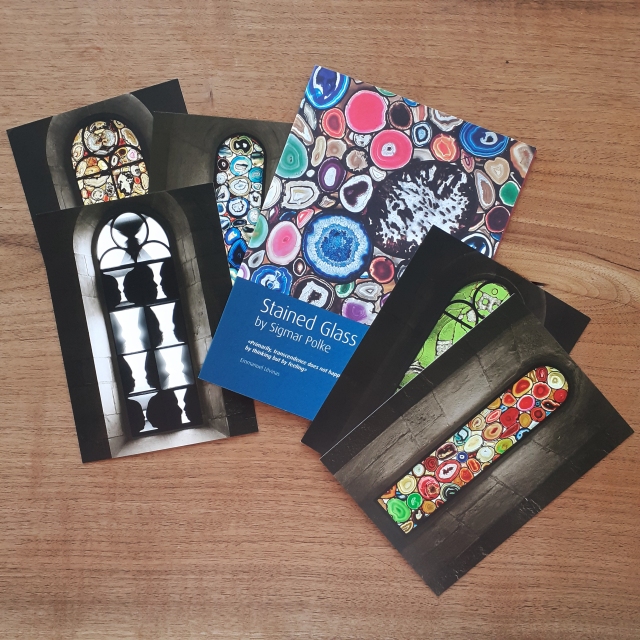
The ex-cathedral is said to have been built over the course of the 11th and 13th centuries CE, and the contemporary stained glass of Sigmar Polke is skilful as to be in harmony with the historic site. The masterful understanding and control over light – both light’s celebration and obstruction within these windows – are something I’ve not really experienced before.
I made sure to pick up postcards of Polke’s work to send off to family and friends before leaving. Visiting the building is something I can’t recommend to those who are entirely uninterested in religion, or those who feel uncomfortable in places of worship. But if you’re comfortable enough to spend time in a quiet church to contemplate the windows, it’s worth seeking out Grossmünster. As with other cathedrals, there’s always the crypt to check out, too; there’s a large statue of the Holy Roman Emperor, Charlemagne, who in legend is said to have founded Grossmünster. Believe the legend or not, it’s up to you.
The stained glass agate is so pretty, I’m always really drawn to precious stones because of their patterns and colours. Because crystals and stones are believed to contain or help facilitate energies in our lives, it makes sense for them to be in a place of worship. I feel rather uncomfortable in places like cathedrals and churches, maybe because of their religious significance, or perhaps because they’re so wide and spacious…nevertheless I’m glad you got to visit so many places during your exchange. Thank you for sharing this!
I don’t know how people make stained glass, but I wonder how difficult it is to create things with it? My grandmother used to have a large stained glass piece in her house as you climbed the wide stairs. I don’t remember much of what it looked like, but I remember the colours. I wish she never sold the house!
LikeLiked by 1 person
Thanks for your thoughts! When I visit places of worship, even if they make a lot revenue from tourism, weather they be western or eastern religion, I still feel “Is it OK for me to be here??” since I don’t practice… and aren’t religious.
You bring up a really good point about the gems used. I looked at them from a monetary perspective first and foremost. But it’s hard to remove gems and stones from spirituality and belief.
There are a few stained glass specialists where I live (I believe they’re independent artisan business given the type of small buildings they’re in) and I’ve never had need to go into the shops but there are homes about the area that definitely have custom stained glass that are features of the buildings. But the majority of the houses around here are all very old, and they suit that design choice. I bet the stained glass in your grandmother’s house was a feature!
LikeLiked by 1 person
Pingback: Past Academic Year – Reflections – Imogen's Student Blog